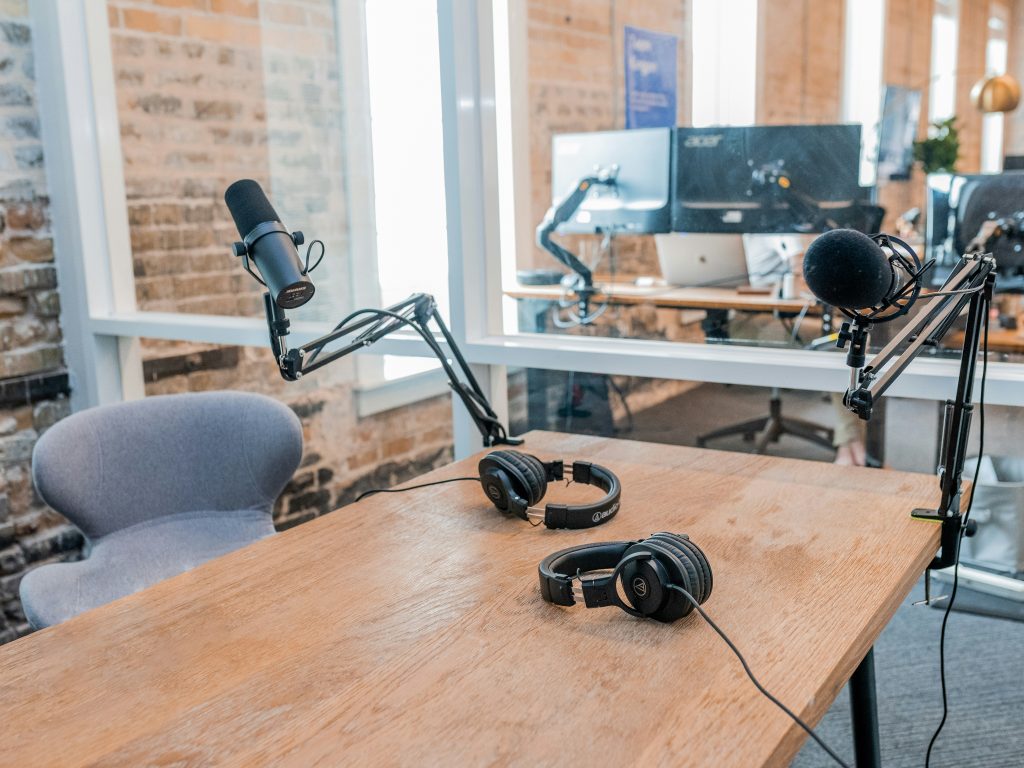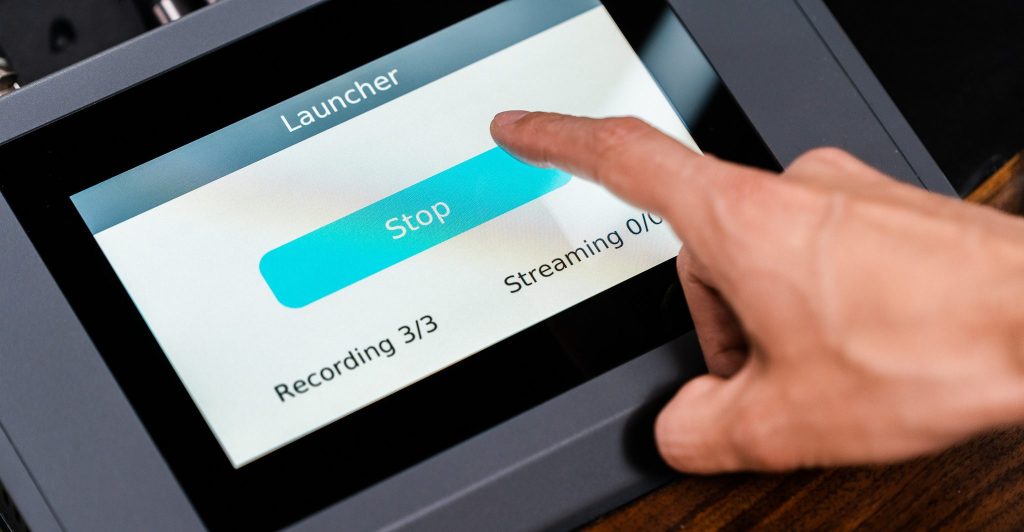Podcasting is one of Canada’s most promising venues for advertisement. Over a full third of Canadians are active podcast listeners according to Media Technology Monitor (MTM), the leading study in telecommunications use in Canada. A 2023 survey by The Canadian Podcast Listener showed that a full 36% of Canadians listened to podcasts every month. MTM found that 33% of Canadians said they listened to at least one podcast per month in 2023, and 31% listened to a podcast at least once a week.
By 2027, the number of users in the Canadian podcast advertising market is expected to reach 5.6 million, with the user penetration rate increasing from 11.2% in 2024 to 13.9% in 2027. This growth underscores the increasing importance of podcast advertising as a viable medium for reaching Canadian audiences.
But it’s not just the numbers, it is also how receptive podcast listeners are to ads. Several studies show that podcasts are emerging as the best advertising venue thanks to higher customer ad acceptance, and the ability to leverage audience sympathy.

Podcast potential for advertisement
Advertising within podcasts is becoming increasingly common as ad technology and measurement advancements keep pace with consumer engagement. Podcasts offer advertisers not only engaged and attentive audiences but also the medium’s trust and authenticity. More than 60% of podcast listeners report taking action after hearing an ad on a podcast.
Compared to other forms of digital advertising, podcast ads appear to be less frequently avoided. Made in Canada says less than 17% of podcast listeners skip ads. If that number is true, that is by far the lowest across all media. But not everybody agrees on that estimate. The latest Numeris RTS survey puts that figure a a more modest 46%. Even then, this represents the lowest ad avoidance rate across all media. The same study found that adding podcasting to your marketing efforts could grow your reach by 7 to 20%.
Percentage of adults 18+ who frequently avoid ads on these digital media

What is the advertisement value for podcasts in Canada?
On a global scale, the podcast advertising market is expected to approach almost $3.5 billion by 2025. In 2023, the Canadian podcast industry’s advertising revenue was estimated at approximately $127.1 million.
Within Canada, the preferred method for podcast advertising is host-read ads, which constitute 60% of all podcast ads, followed by 24% pre-produced ads and 16% dynamically inserted ads. The most popular podcast genres for advertising in Canada include society and culture, news and politics, and business.
But the question is: does it work?
Brands that use podcasts for marketing have experienced significant benefits, with 89% reporting higher brand awareness and 57% seeing increased brand consideration. Additionally, these brands have observed a 24% boost in brand favorability, a 14% increase in purchase intent, and a 16% rise in engagement.
Podcast advertising also appears to influence consumer behavior positively, with 54% of listeners considering purchasing products they hear about in ads, and 17% becoming more likely to buy after hearing a podcast ad. Importantly, among bi-weekly podcast listeners, 51% reported making a purchase influenced by podcast ads, highlighting the effectiveness of this advertising medium.
Podcast advertisement used to be simply bulk marketing: whatever you listen to, you would get the same ads. Nowadays, big brands target audience segments programmatically, across thousands of podcasts at once. It is closer to Google’s bidding approach. Although measuring ROI can be difficult – less than 50% of marketers are confident about identifying it, let alone measuring it – podcasting does have a unique advantage. It is almost universally seen by its listeners are being more intimate, which makes it ideal for brands trying to develop a human bond with their customers. That’s why Nielsen reports a 71% aided recall rate for podcasts.
What’s a recall rate?
Brand-aided recall rate refers to the percentage of respondents who can recall a brand when they are provided with a specific cue or hint. This is in contrast to unaided recall, where respondents must recall the brand without any prompts. If a survey is conducted among 1,000 people and 600 can recall the brand after being given a prompt, the brand-aided recall rate would be 60%. This finding is echoed, albeit more modestly, by research firm Edison, reporting that 54% of podcast consumers say that they are more likely to consider the brands they hear advertised on podcasts. What’s more: 38% of marketers working for retail companies say podcast advertising is the media channel with the biggest ROI.
How To Reach Podcast Listeners with Ads?
Podcast Listeners have specific expectations when it comes to advertisements. Most expect to hear 2-3 ads per episode, with a preference for 1-2 ad breaks. Like consumers of other media, some podcast listeners do skip ads, and the likelihood of this happening can be influenced by the creativity and engagement level of the ad, as well as its frequency and relevance to the listener. Interestingly, listeners tend not to tire of ads that are funny, novel, or interesting. Given that one of the main reasons people listen to podcasts is to learn something new and enjoy great storytelling, the ad experience should match the engagement level of the podcast content.
Encouragingly, most listeners (66%) report hearing an ad 2-3 times before making a purchase, with 75% of those purchases happening within a week of last hearing the ad. Additionally, 28% of listeners say they listen to all the ads on podcasts, which is the highest percentage among all tested media channels. Podcasts have a strong influence on consumer behavior, with 72% of listeners crediting podcast ads as influential in their decision to purchase a product or service.
To maintain podcast advertising as an effective channel, it is essential to protect the listener experience and invest the same effort into creating quality ads as is done with podcast content. As presenter Tom Webster succinctly put it during a study’s webinar: “Podcast listeners don’t skip ads, they skip crap.”

Key Demographics for Canadian Podcast Listeners
Total Listeners in the Past Year: Nearly 15 million Canadian adults (45% of the 18+ population) have listened to podcasts in the past year.
Monthly Listeners: About 12 million Canadian adults (36% of the 18+ population) listen to podcasts at least once a month.
Key Demographics:
- Age Group: Predominantly young adults aged 18-34.
- Socio-economic Status: Generally affluent, residing in households earning over $100K annually.
- Education: Higher education levels over-index among this group.
- Diversity: Represents a diverse segment of the population.
Demographically, 47% of the audience for video podcasts is between 18 and 34. Meanwhile, audio podcasts are seeing increases in listenership among older adults. Those aged 65+ now account for 11% of all listeners, up from 8% since the fall 2022 survey. While the gender balance is relatively even among audio podcast listeners, the audience for video podcasts leans heavily male.
Those aged 18-49 were most active, with 44% being active podcast listeners. But perhaps the most exciting part about age differences is that of podcast sources. Among Canadians from ages 35 to 49, the most common podcast medium was Amazon Music—a likely choice since they would be more familiar with Amazon’s vast number of services available. Ensuring, YouTube was the leading podcast source for 18 34 years, showing an ever-growing capture of traditional media
What Do they Listen to
In 2024, The two most popular podcast genres were comedy and true crime, according to the Canadian Podcast Listener. In 2023, the ten most popular podcasts in Canada were:
- The Joe Rogan Experience
- Drowning Creek
- Smosh Read Reddit Stories
- Where Everybody Knows Your Name with Ted Danson and Woody Harrelson (sometimes)
- The Diary Of A CEO with Steven Bartlett
- The Mel Robbins Podcast
- Huberman Lab
- The Tucker Carlson Podcast
- Spittin Chiclets
- How We Fix This
Comparing Podcasts and Television
So how effective is marketing on podcasts versus television? It depends on who you are. Gen Z and Millenials are much easier to reach through podcasts, whereas Boomers and Generation X are still attached to television. This explains why as of 2022, 88% of marketers were happy enough with ads on podcasts to continue or increase ad spending on pods.
Traditional TV continues to capture significant audiences, especially during prime time and for live events like sports. However, engagement with traditional media is more passive compared to podcasts. Podcasts offer a higher level of engagement, often including multitasking activities, and can influence consumer behavior more directly. For instance, about 54% of podcast listeners are more likely to consider purchasing from a brand after hearing about it in a podcast.
Traditional media such as TV have a broader demographic reach, appealing to various age groups and households, including diverse ethnic segments. Podcast listeners, on the other hand, tend to be younger, more affluent, and highly educated, with a significant percentage having postgraduate degrees and high household incomes. This is the same generation that prefers very short videos, even those generated by AIs, to long formats.
Deloitte’s 2024 Digital Media Trends report highlights a landscape where younger consumers, particularly Millennials and Gen Z, are shaping media and entertainment consumption. Their preferences are leaning heavily towards digital platforms that integrate social media, streaming, and interactive gaming. This is a stark contrast to traditional media, which remains more static and less integrated with these emerging technologies.
Conclusion
Podcasting’s impact on advertising in Canada is undeniable, driven by its unique ability to engage listeners in a personal and intimate manner. As the data suggests, podcasts offer a high level of audience engagement and trust, which translates to effective advertising outcomes. The relatively low ad avoidance rates further enhance its appeal, positioning podcasts as a highly effective channel for reaching engaged audiences.

Pierre Bussières is Editor of Uber Optimized, Director of Sales with JeemanGo Podcasts, and Editor in Chief of Hoppy History. He writes on alcohol markets, beer history, and disruptive technologies. He previously wrote for Global Risk Insights, the Diplomat, Reflets, La Montagne des Dieux, the NATO Association of Canada, Diplomatie, and Le Temps d’une Bière.
-

Top Ten Podcasts For Ottawa
Here are some of the top podcasts to check out if you are new to the national capital area. Whether you are just visiting Ottawa or staying for a while, these 10 top podcasts will keep you wildly entertained.
-

How to Use Your Podcast for SEO Link Building Strategies: A Guide for Uber Flix Studio
Hijack these free SEO tools to boost your online presence with your podcast.
-

Building Relationships Through Conversation: Insights from Martin Clement
Do you find networking intimidating? This article offers valuable insights on how to build meaningful relationships through effective communication. Learn how to start conversations, ask the right questions, and actively listen to others.



